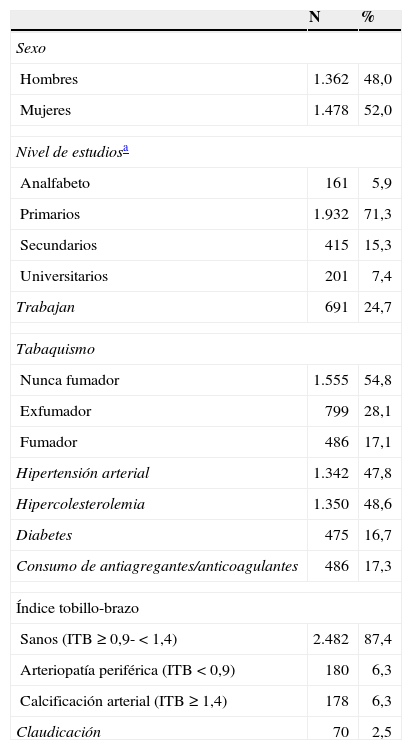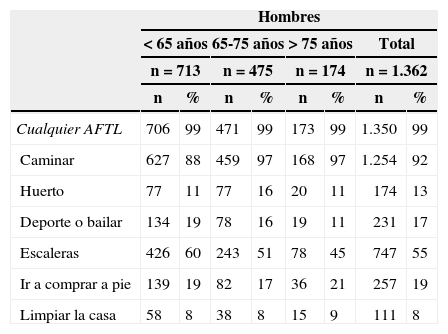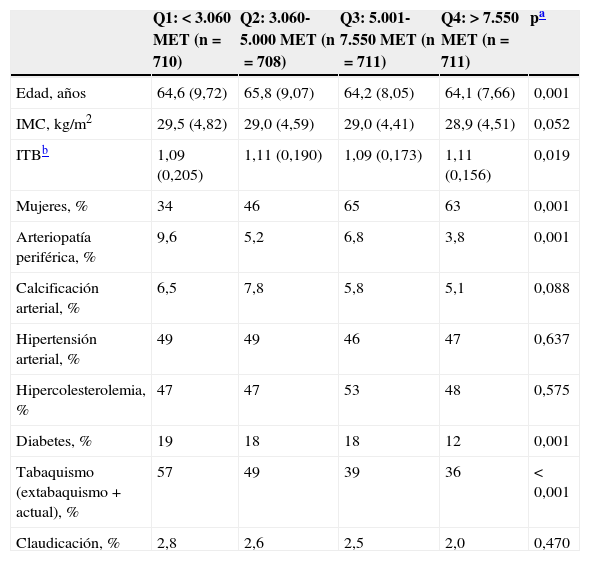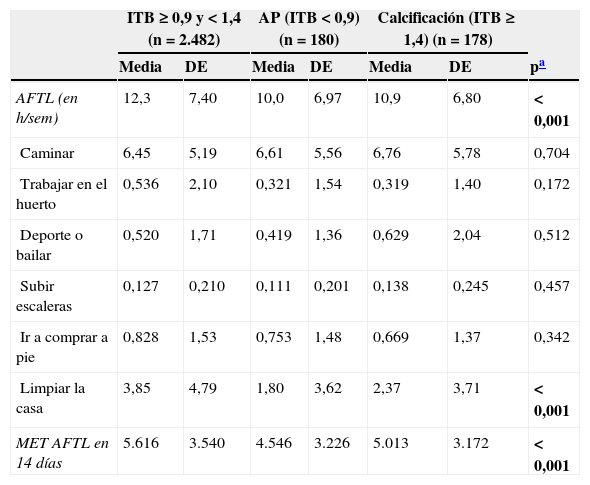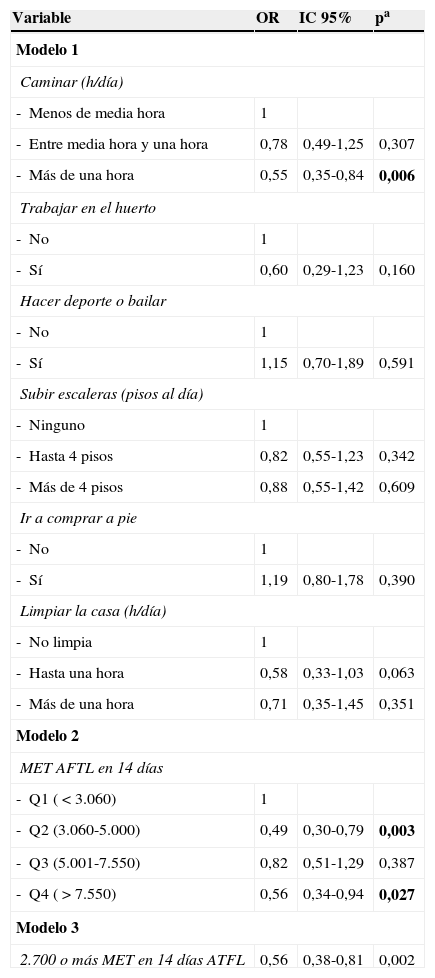Niveles elevados de actividad física durante la vida diaria se asocian con un menor deterioro funcional en las personas con arteriopatía periférica (AP) y positivamente con el índice tobillo-brazo (ITB) en sujetos libres de esta enfermedad. El objetivo de este estudio es examinar la relación entre la actividad física en el tiempo libre (AFTL) y el ITB en población general.
Material y métodoSe analizaron los datos basales de la cohorte ARTPER correspondientes a 2.840 sujetos mayores de 49 años de Barcelona. La AFTL se obtuvo mediante la versión reducida validada en español del Cuestionario de actividad física en el tiempo libre de Minnesota. Se consideró AP un ITB<0,9. Para evaluar la asociación independiente entre AFTL y AP se utilizaron modelos de regresión logística multivariante.
ResultadosLos sujetos que realizaban más AFTL eran más jóvenes, mujeres, menos fumadores y tenían menos AP. La actividad total medida en metabolic energy turnover (MET) y el cómputo de horas totales de AFTL fue significativamente superior en sujetos sanos (p<0,001). Existía una relación inversa entre la AFTL total y el riesgo de padecer AP (odds ratio 0,56, intervalo de confianza del 95% 0,38-0,81 para los que gastaban 2.700 o más MET en 14 días) ajustando por factores de confusión.
ConclusionesLa AFTL se relacionó positivamente con el ITB en nuestro estudio, siendo los sujetos con AP los que menos AFTL realizaban.
High levels of daily physical activity have been shown to be linked to decreased functional impairment in peripheral artery disease (PAD) patients and positively related to the ankle brachial index (ABI) in subjects without PAD. The aim of this study was to examine the relationship between leisure time physical activity (LTPA) and the ABI in a general population.
Material and methodBaseline data from the ARTPER study cohort corresponding to 2,840 subjects>49 years from Barcelona were analyzed. The LTPA variable was obtained through the validated Spanish short version of the Minnesota Leisure Time Physical Activity Questionnaire. ABI<0.9 was taken to indicate PAD. Multivariate logistic regression analysis was performed to evaluate the independent association between LTPA and PAD.
ResultsSubjects with more LTPA were younger, female, less smokers, and suffered fewer PAD. Total activity, measured in metabolic energy turnover (MET) and the LTPA hours, was significantly higher in subjects without PAD (P<.001). There was an inverse relationship between LTPA and the risk of suffering PAD (odds ratio 0.56, 95% confidence interval 0.38-0.81 for those who expended 2,700 METs or more in 14 days) adjusting for confounding factors.
ConclusionsIn our study, LTPA was positively related to the ABI, with those with PAD being the ones with less LTPA.







